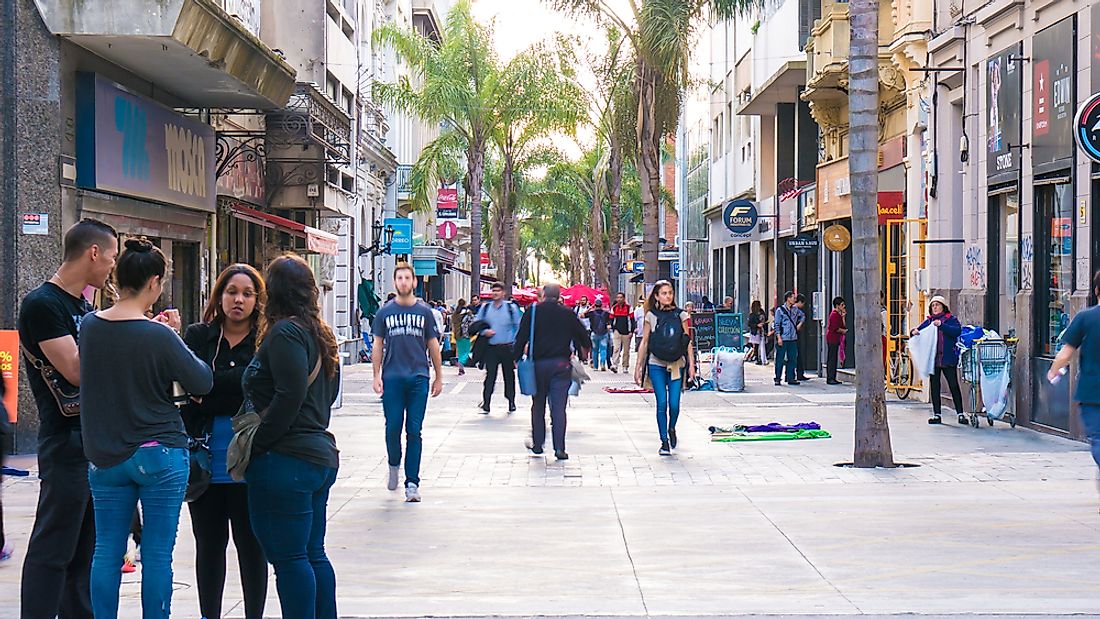What Is The Ethnic Composition Of Uruguay?

Uruguay is a country in southeastern South America. Officially named the Oriental Republic of Uruguay, the country occupies an area of 181,034 km2, ranking as the second smallest in South America, after Suriname. Uruguay has an estimated population of 3.46 million, and has a slower rate of population growth and a higher median age than most countries in South America, which is attributed to low birth rates, high life expectancy, and high rates of emigration. The country's capital and largest city is Montevideo, which has an estimated population of 1.8 million. Uruguay currently ranks among the most democratic and peaceful countries in the continent, and also has a very high adult literacy rate (98.1%). In terms of demographics, Uruguay's population is composed of ethnic groups that include European, African, Asian, and indigenous populations.
Ethnic Populations
European Populations
Arriving in 1512, the Portuguese were the first Europeans to settle in Uruguay, followed by colonists from Spain four years later. European colonization was met with fierce resistance from the indigenous populations, which made establishing settlements in Uruguay difficult. However, the Portuguese and Spanish eventually created permanent settlements, and were later followed by settlers from Italy, Britain, France, and Germany. Europeans currently make up approximately 88% of Uruguay's population, most of which identify as Spaniards. However, other European population groups in Uruguay include Irish, Lithuanian, Estonian, British, German, Austrian, Greek, and Dutch. Additonally, the term Mestizo is used to refer to people of both European and indigenous descent.
African Populations
Historically, most of the African population in Uruguay arrived as slaves, coming by boat from the port in Buenos Aires to the Rio de la Plata region. Between the late 1700s and early 1800s, an estimated 20,000 African slaves arrived in Montevideo, and composed 25% of the country's population by the 1800s. Most slaves enrolled in military service and were engaged in the nation's 19th century civil wars. The majority of the Afro-Uruguayan population still lives in the capital, Montevideo, and some notable Afro-Uruguayans include football players Marcelo Zalayeta, Luis Suárez, Santiago Garcia, Victor Diogo, and Richard Morales.
Indigenous Populations
Prior to European settlement, Uruguay was inhabited by the indigenous Charrúa peoples. The Charrúa were a small tribe that had been driven south from Paraguay by the Guarani people, who historically occupied many parts of South America. The Charrúa had an estimated population of 9,000 prior to European colonization, but most were killed through a genocide ordered by the first president of Uruguay, Fructuoso Rivera, in 1831. In addition to the Charrúa, other indigenous populations that inhabited Uruguay include the Chaná, Yaro, Minuane, Bohán, and Guaraní. Most were semi-nomadic peoples, and now compose only about 2.4% of Uruguay’s population.
Asian Populations
The first settlers from Asia arrived in Uruguay in 1949 from Taiwan and mainland China. Currently, Uruguay contains small population groups from Asia, often Western Asia, including population groups from China, Japan, Azerbaijan, Lebanon, and Armenia.
List of the Five Largest Ethnic Population Groups in Uruguay
| Rank | Ethnicity | % of Total Population |
|---|---|---|
| 1 | White | 87.7% |
| 2 | Black | 4.6% |
| 3 | Indigenous | 2.4% |
| 4 | Other | 0.3% |
| 5 | None or Unspecified | 5% |











